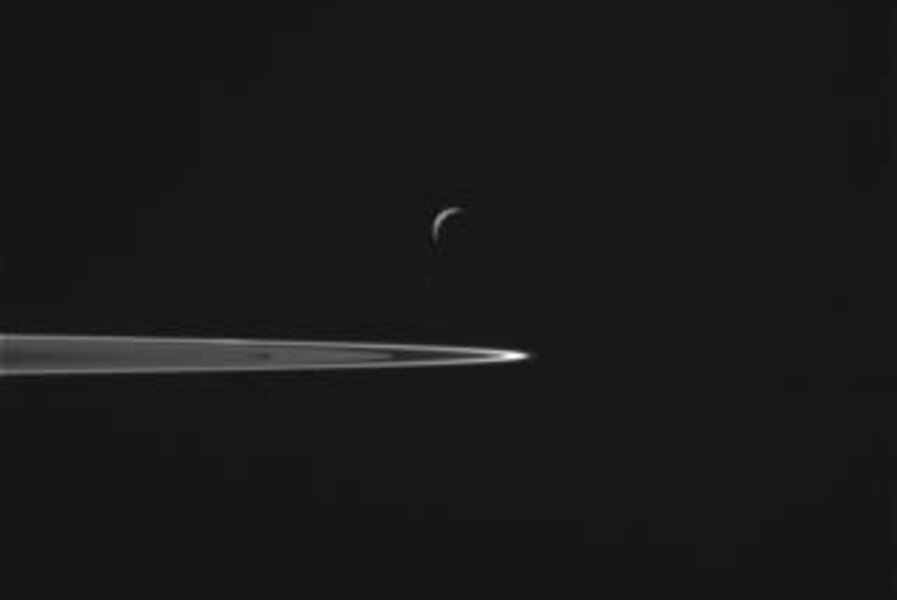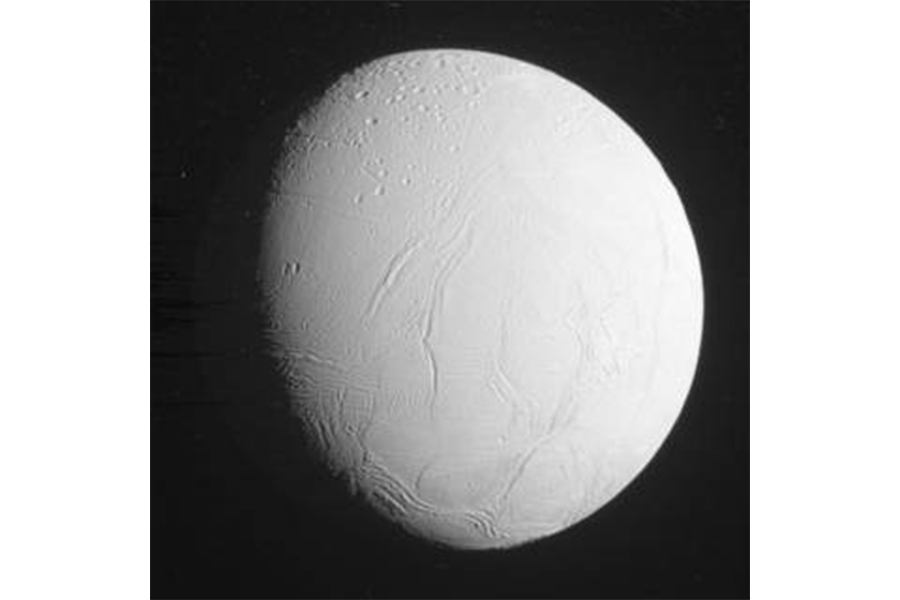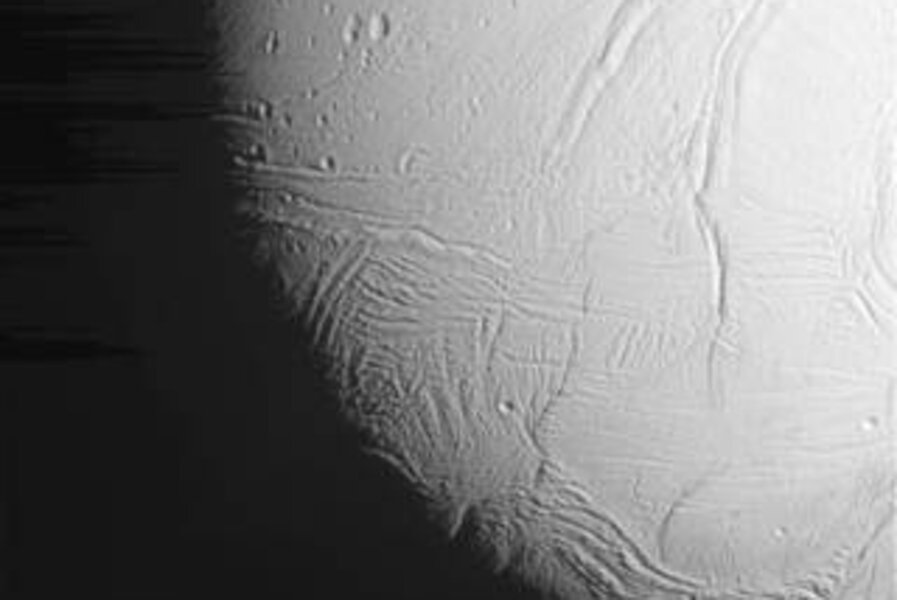See NASA's sneak preview reel of photos from Enceladus flyby
Loading...
The south pole of Enceladus, Saturn’s icy moon with a tendency to spout water, just had a close-up, courtesy of a US-European spacecraft.
The Cassini spacecraft completed a flyby of Enceladus on Wednesday, traveling within 30 miles of the surface of the south pole. The spacecraft also plunged through a font of water erupting from the planet and collected particles for later analysis.
Most of the photos released this week are unprocessed, raw images of the encounter. (Click through the above photo reel to see progressively closer shots of the moon.) Processed and confirmed images are expected to come later in 2016. The images are stunning, but the most exciting information and discovery will come form the scientific data collected by Cassini, according to project scientist Linda Spilker.
The data collected while traveling through Enceladus's water plume will help scientists determine the components of the moon's vast under-ice ocean.
“With our much deeper dive through the plume, we’ll have a chance to sample potentially larger particles," Dr. Spilker told The Christian Science Monitor in the days leading up to the flyby. The larger particles could reveal new organics for scientists to analyze.
Finding out more information about the ocean and its characteristics will also help scientists answer whether or not the sea might be livable, moving us one step closer to possibly discovering life on another planet.
Discovering evidence of life on Enceladus might be an even bigger discovery than finding the evidence on Mars. As the Monitor reported, “Life on Enceladus would represent strong evidence that life emerged in the inner and outer solar systems independently.” Any discovery of life on Mars, on the other hand, would leave open the possibility that microbes from one planet might have colonized the other.
Last year, NASA passed on a mission proposal to send a craft capable of detecting life to Enceladus. A new proposal is being refined, according to Dr. Jonathan Lunine, a scientist at Cornell University, but could cost as much as $450 million.
As of now, no future missions to Enceladus are scheduled.
[Editor's note: An earlier version suggested that this was Cassini's closest approach to Enceladus. That actually happened on October 9, 2008, according to NASA's Jet Propulsion Laboratory.]











